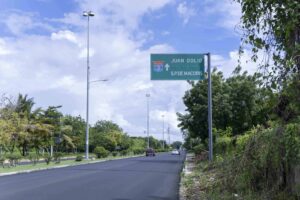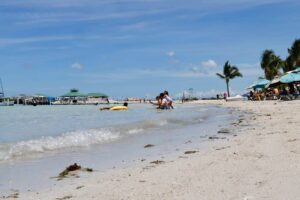He National Botanical Garden Doctor Rafael Maria Moscoso reaches his 48th birthday anniversary next Friday, August 15, with several projects of conservation of the flora of the Dominican Republic, specifically endemic species with some degree of threat.
The director of the institution, Nelson Suárez, indicated that one of these agreements was the one signed with the Royal Botanic Gardens of Kew (England), and will cover a project of conservation of the flora associated with magnolias.
“We are going to collect seeds from associated species. We will determine their germination capacity and also their adaptability to different altitudes,” said Suárez, adding that the initiative, scheduled to begin in September, will have the Valle Nuevo National Park, the Loma Barbacoa Scientific Reserve and Bahoruco Oriental as work camps.
Teodoro Clase, head of the Botany Department, said that another of the initiatives of conservation It is being developed with the University of Puerto Rico, an entity that is researching a leafless orchid (one that has no leaves) found in the country and which could constitute a new species for science.
Class added that the National Botanical Garden works in the conservation of eight species of shrubs exclusive to the province of Samaná. The specialist indicated that these species have a significant level of threat, because in some areas only two specimens of the species have been observed.
Species rescue in in vitro laboratory
The entity has an in vitro laboratory where various plants are reproduced to ensure their preservation. Zoilo Richardson, in charge of in vitro cultivation and the orchidarium, explained that this unit currently works with some 25 endemic and native species of the island that are in danger of extinction.
Most of the specimens that are worked are orchidswho have been protagonists of projects such as the reintroduction of 1,000 specimens in the country’s dry forests.
The director of the Botanical Garden pointed out that these programs have been carried out in the reserves of Villa Elisa, where last year 300 specimens of the unusual cacatica (Tolumnia henekekii) were planted, and Montecristi Solar, as well as in the Gurabo River Canyon Wildlife Refuge (Furnia de Gurabo).
Richardson said that, as part of the laboratory’s work, the Botanical Garden periodically conducts evaluations of the reproduced species, in order to observe whether they adapt to the environment in which they were placed.
After discovering a species…
During their presentations, the representatives of the Botanical Garden recounted experiences they have had in areas of the country where they discover species of great value, but which are threatened on several fronts, including the use of land for various purposes, such as real estate.
Teodoro Clase explained the procedure in these cases. “We talk to the people on the farms, the community or the trustees. When we find a rare species we publish it and talk about it,” he explained, while citing a case where they collected capsules of a species near the clearing area recorded in Buen Hombre.
“When we find them we try to bring them back and put them in the Garden’s living collection,” he adds.
The head of the Botany Department said that when the institution’s technicians find areas of value for the conservation and there is some degree of threat, they send proposals to the Ministry of the Environment, so that this entity considers this space for the National System of Protected Areas (Sinap).
Trainings
Due to research work with endemic and rare species, two technicians from the Botanical Garden will Travel to Mexico for training, reported Claritza de los Santos, head of Horticulture at the institution.
De los Santos said that the technicians, who work in the in vitro culture laboratory, will receive training in plant micropropagation. “As we are working with species native to the island, we are seeking to reinforce their knowledge,” he explained.
The institution has also hosted students from various universities, who take advantage of the spaces and resources of the Botanical Garden to carry out their field work and research.
Landscaping and urban areas
When asked about the work carried out by the Botanical Garden in urban areas, Moisés Montero, head of the Garden Design and Maintenance Division, reiterated that the institution carries out landscaping work and the use of species for the beautification of these areas.
“We have served as advice and a guide for the conservation of the species,” said Montero. One of these guides was developed together with the Mayor’s Office of the National District and is used for urban trees.
He National Botanical Garden It was designed by Dominican architect Benjamín Paiewonsky and built jointly with engineer Joaquín Ruiz. Its construction began in March 1972 and it was inaugurated on August 15, 1976.
In 2000, with the creation of the then State Secretariat for the Environment and Natural Resources, the National Botanical Garden It remains attached to that body, maintaining its administrative and management autonomy.


